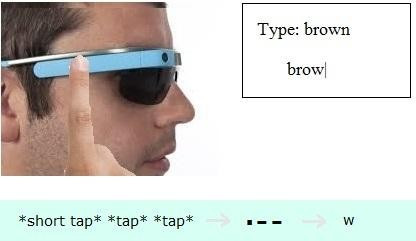| Passive Haptic Learning - The No Effort Way To Learn |
| Written by Lucy Black | |||
| Sunday, 30 October 2016 | |||
|
It is a dream that one day we can learn new skills by being plugged into a computer. We might have a way to do it without the plugging in. Simply being tapped by a computer might help you learn manual skils. Researchers at the Georgia Institute of Technology have developed a system that teaches people Morse code within four hours using a series of vibrations felt near the ear. Participants wearing Google Glass learned without concentrating on the task. If you have ever tried to learn Morse code you will know that, while not difficult to get started with, it is very difficult to become proficient. This technique seems make experts out of beginners as, after just four hours, the participants were 94% accurately keying a sentence that used every letter of the alphabet. The trick is called passive haptic learning and it uses vibrations and Google Glass. The vibrations, taps on the temple, presented the Morse code dots and dashes while a voice said the letter in their ear. A control group fed the same information but without taps only scored half as well.
It seems that the taps, the haptic input, makes it easier to learn the patterns at a deeper level. The same sort of technique has been used to teach people braille, to play the piano and improve hand sensation in patients with partial spinal cord injury.
In the case of the piano learning which finger to use was indicated by a vibration provided by a glove. In the Morse code case the taps were felt on the forehead but the skill was transferred to the finger. “Does this new study mean that people will rush out to learn Morse code? Probably not,” said Starner. “It shows that PHL lowers the barrier to learn text-entry methods — something we need for smartwatches and any text-entry that doesn’t require you to look at your device or keyboard.” This is so easy to implement that perhaps there is room for an app that teaches you Morse code. "The next study will go a step further, investigating whether PHL can teach people how to type on the trusted QWERTY keyboard. That would mean several letters assigned to the same finger, rather than using only one finger like Morse code."
More Informationhttp://www.news.gatech.edu/2016/10/27/learning-morse-code-without-trying https://research.cc.gatech.edu/ccg/?q=projects/mobile-music-touch-mmt Related ArticlesMuscle Input Device Getting Ready To Ship AquaTop Display - A True Immersive Interface A sticky touch screen improves interaction
To be informed about new articles on I Programmer, sign up for our weekly newsletter, subscribe to the RSS feed and follow us on, Twitter, Facebook, Google+ or Linkedin.
Comments
or email your comment to: comments@i-programmer.info |
|||
| Last Updated ( Sunday, 30 October 2016 ) |



